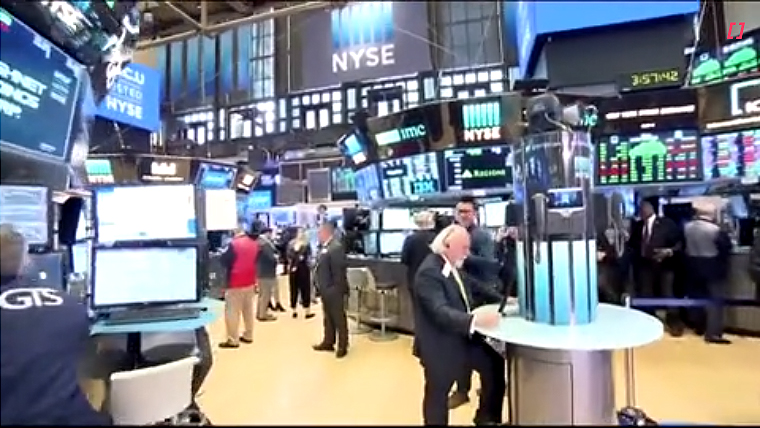
Ukraine-Russia war escalation continues, after Russia fired an intercontinental ballistic missile for the first time. Market reaction was muted, although European currencies continue to struggle. The NZD is also languishing below 0.59 and NZD/AUD dipped below 0.90. US Treasuries continue to consolidate. There were mixed US second-tier data releases overnight.
Geopolitical risk around the Ukraine-Russia war intensified further after Russia launched an intercontinental ballistic missile into Dnipro. This is the first use of an ICBM in a war zone since the weapon was developed. The missile was designed to carry nuclear weapons but, on this occasion, didn’t. Russia’s defence ministry said it takes a responsible position to avoiding nuclear conflict. Use of the weapon has followed Ukraine’s firing of US and British-made long-range missiles into Russia. Analysts noted that Russia likely used the weapon as a warning message by the Kremlin directed against Europe.
Market reaction to the report was muted. Oil prices are up over 1%, with Brent crude trading just below USD74 per barrel, and the nearly 4% upside this week as tensions have escalated looks modest under the circumstances.
US equities have had a choppy trading session and the S&P500 is currently up 0.6% while the Nasdaq index is only slightly higher in early afternoon trading. Nvidia has traded a wide range following another strong earnings release, but not meeting the most optimistic of forecasts, and is currently down less than 1%. Alphabet is down over 5% after the US Justice Department said Google should be forced to sell off its popular Chrome browser.
US Treasuries continue to consolidate, the 10-year rate trading a narrow 5bps range (again) and showing little net movement for the day, currently at 4.41%.
Amidst the barrage of Fed-speak we’ve heard since the FOMC meeting which came soon after the US election, Richmond Fed President Barkin has been one of the few (if only FOMC member?) to delve into the impact of President-elect Trump’s policies. In an interview with the FT, he noted that businesses were “concerned” about the inflationary effects of the sweeping tariffs and plans to deport illegal immigrants. “I can see why the businesses think that,” Barkin said, but he noted that other Trump policies related to boosting domestic energy production “might be disinflationary”.
Echoing Chair Powell’s comments at the FOMC meeting, Barkin said the Fed should not pre-emptively adjust monetary policy ahead of possible changes in economic policy. Market bets for rate cut in December remain finely balanced and Barkin said it didn’t want to prejudge the decision, but it would depend on the data which currently suggests the economy is “quite prosperous”.
In terms of second-tier US economic releases overnight, jobless claims data were mixed, with initial jobless claims falling (more than expected) 6k last week to 213k, the lowest level since April, but continuing claims (with a one-week lag) rose (more than expected) 36k to a three-year high of 1.908m. Boeing’s strikes, weather effects and errant seasonal factors have had an impact on the figures recently. Separating the signal from the noise, it is fair to say that the US labour market has generally been weakening, but from a strong base and market conditions aren’t too far from equilibrium.
Other US data were mixed, with existing home sales rising slightly stronger than expected at 3.4% m/m in October, reversing a fall seen over the previous two months, while the Philly Fed business indicator was much weaker than expected at minus 5.5, contrasting with the sharp rise in the Empire manufacturing indicator released at the end of last week.
Currency movements have been mixed, with notable weakness for European currencies, possibly reflecting the escalation in Ukraine-Russia developments. EUR has traded at fresh lows for the year and is currently at 1.0485 while GBP has fallen below 1.26. JPY was supported after BoJ Governor Ueda’s comments that keep alive the chance of a rate hike next month. USD/JPY took a brief look below 154 and currently still trades lower for the day at 154.50.
The NZD continues to languish below 0.59 and trades this morning around 0.5860. NZD/AUD traded below 0.90 for the first time since July. Ahead of an expected 50bps rate cut by the RBNZ next week, BKBM has recently traded below BBSW which means shorting the NZD relative to the AUD is now a positive carry trade, which eases the path towards further falls in the cross rate. On other crosses, NZD/EUR and NZD/GBP are modestly higher, while NZD/JPY and NZD/CAD are weaker.
Bitcoin rose to a fresh record high above $98k. Not unrelated a crypto entrepreneur paid over $6m for a banana duct-taped to a wall.
In the domestic rates market yesterday, NZGB yields were flat to 3bps higher with a curve steepening bias. The weekly bond tender was mixed, with strong bidding for the nominal 2029s and 2041s and the 2030 linkers, but tepid demand for the 2032s. The swaps market also showed a steeper curve, with the 2-year rate flat at 3.78% and the 10-year rate up 3bps at 4.27%. There was no reaction to a downbeat speech by NZ Treasury Chief Economic Advisor Stephens. He flagged a likely further downgrade to the Treasury’s economic and fiscal forecasts. He noted “recent data has suggested that the economic downturn has been deeper, and the recovery may begin later, than the Treasury forecast at Budget 2024”.
The economic calendar kicks up a gear, with Japan CPI data ahead of European and US PMI data releases tonight. The consensus expects little change in the PMIs across the board for November.




We welcome your comments below. If you are not already registered, please register to comment.
Remember we welcome robust, respectful and insightful debate. We don't welcome abusive or defamatory comments and will de-register those repeatedly making such comments. Our current comment policy is here.